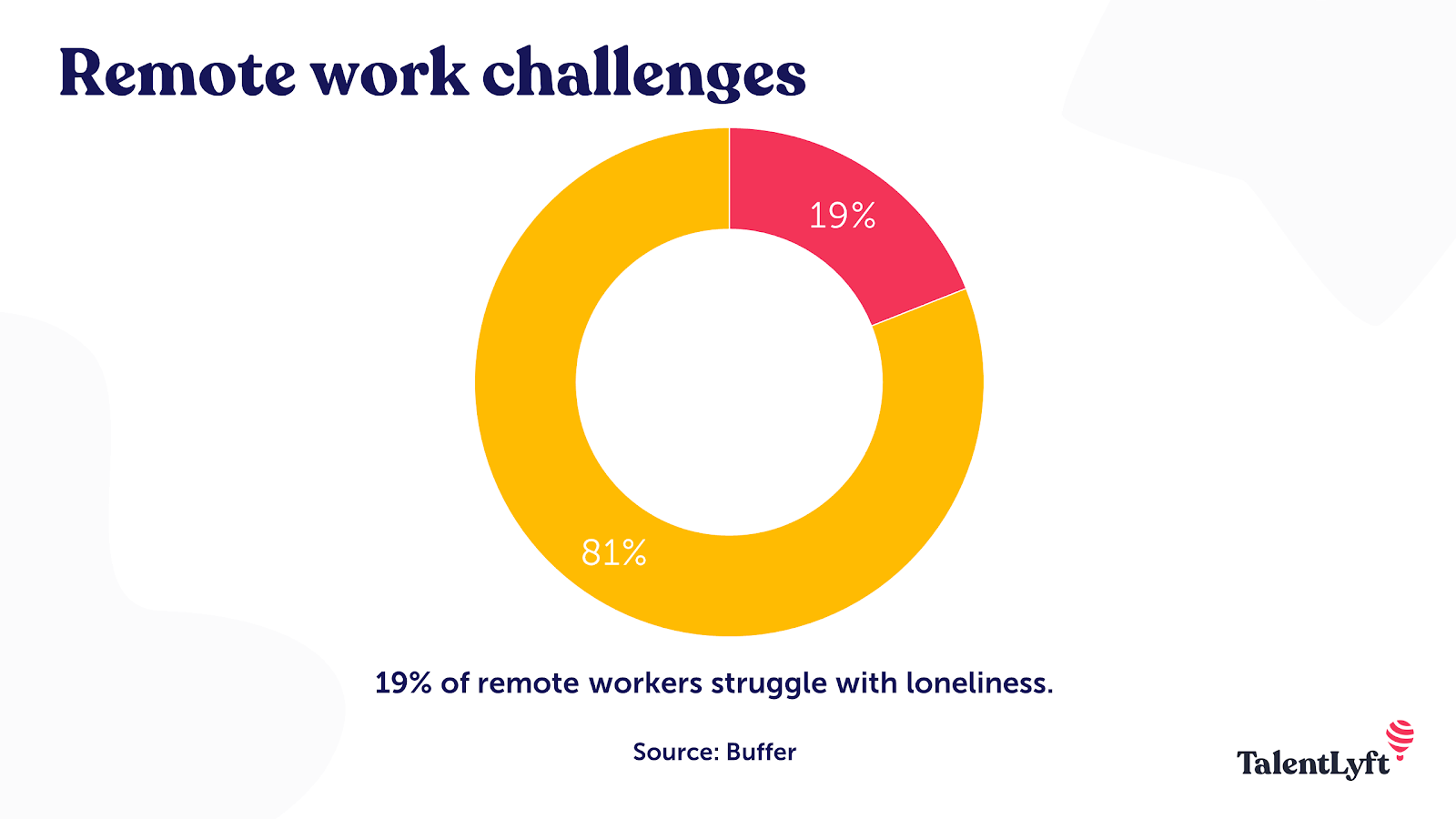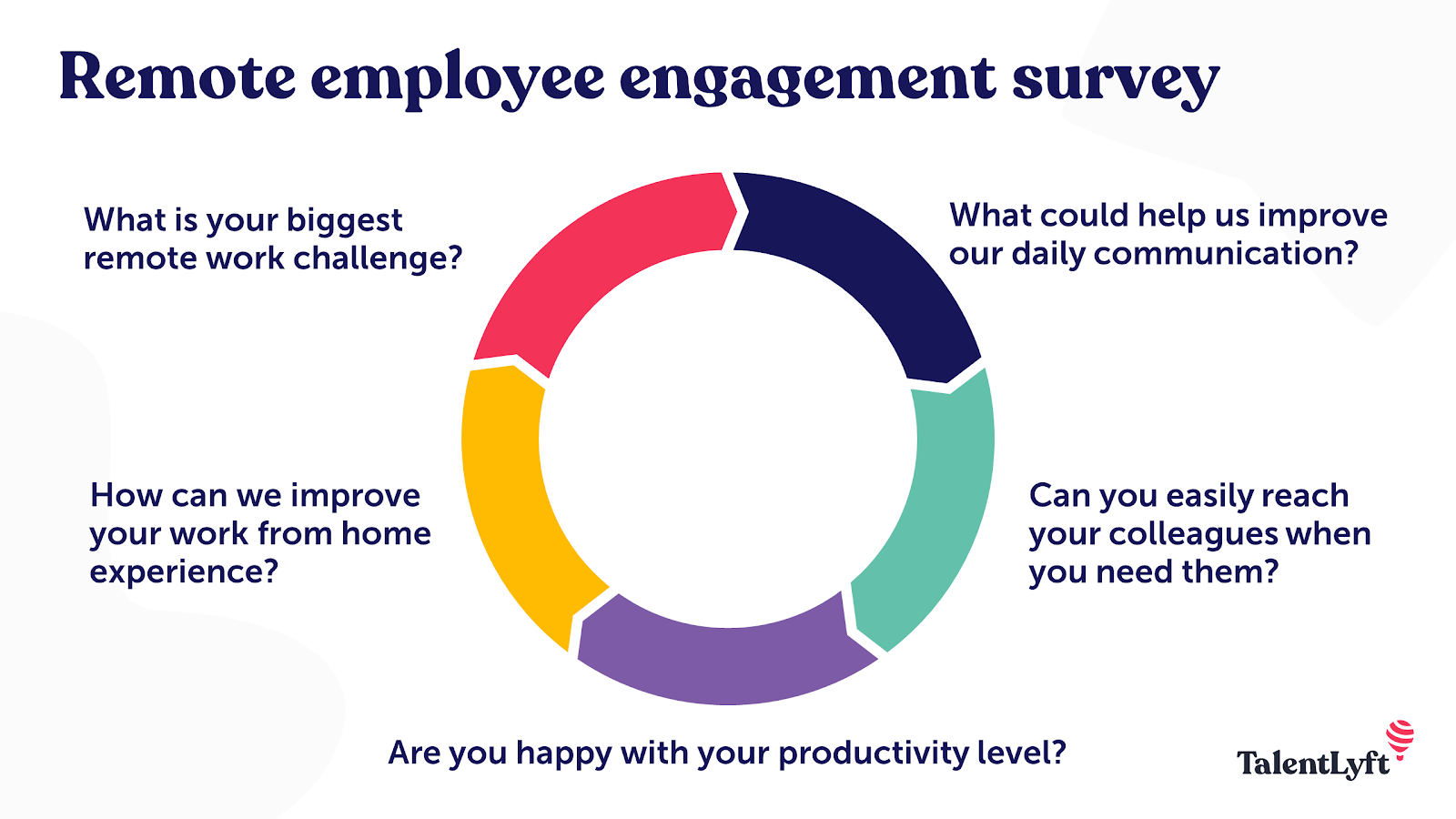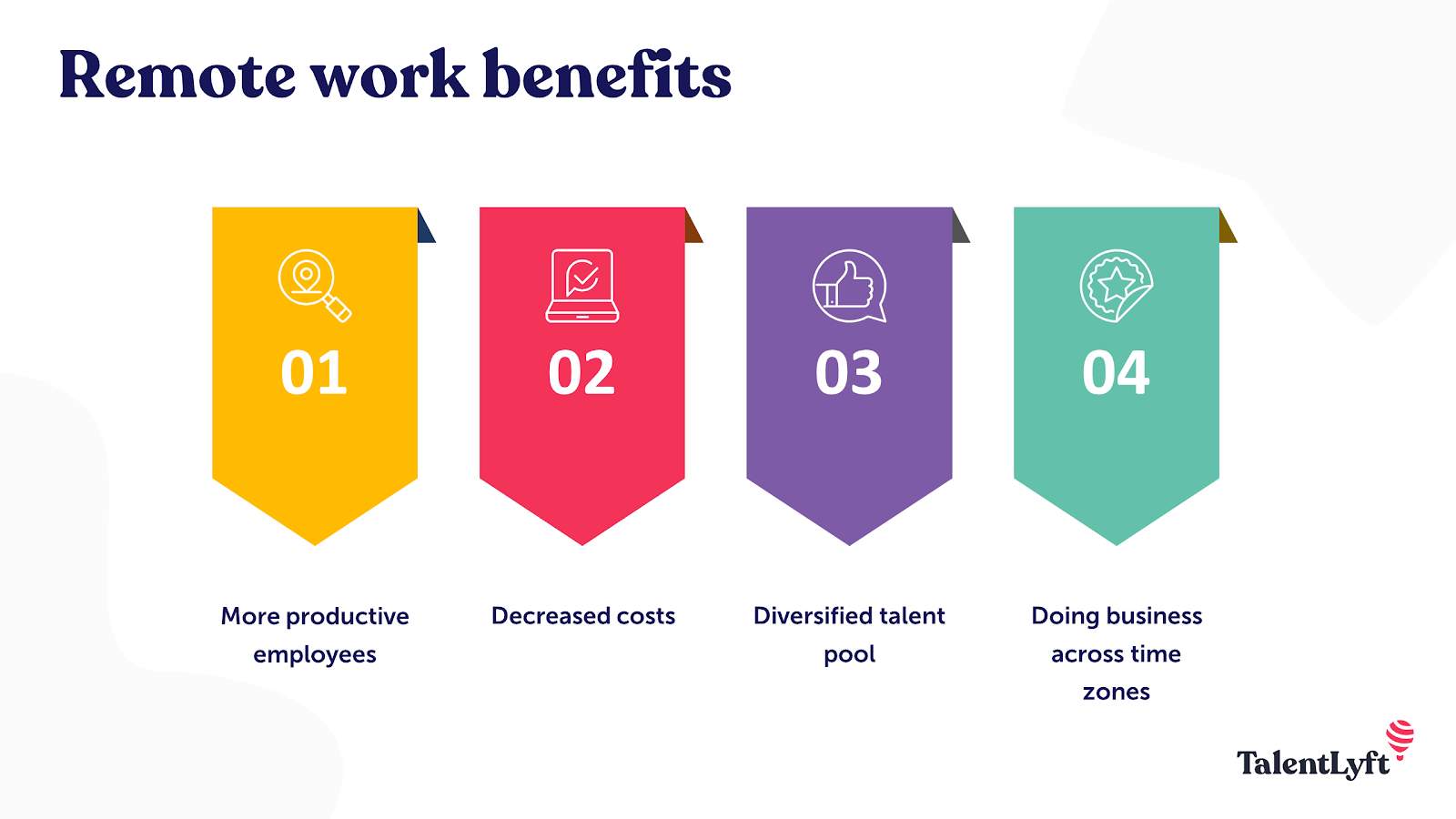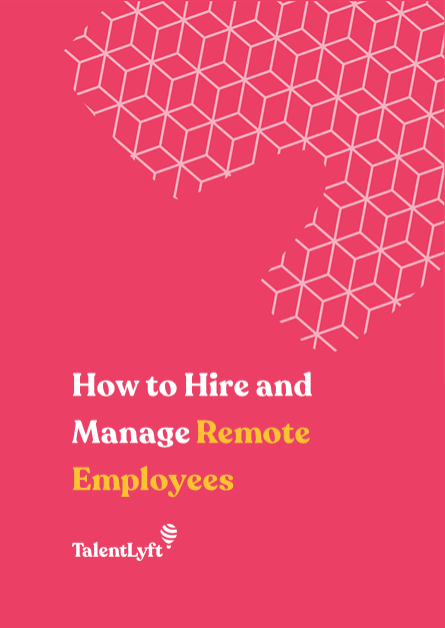![https://adoptoprod.blob.core.windows.net/article/GybNRGeHhkuCIPqCFvVVtg.png]()
Employee wellness trends in 2020
In 2020, more people than ever are working from home. To many people, this lifestyle change seems like the perfect solution to striking a good work/life balance. And to think, it's been sitting under our noses all these years. Today, over 60% of Americans work from home at least some of the time and they want to keep working remotely in the future.

New employee wellness challenges
However, remote working creates a whole host of new challenges. Protecting your employees' mental and physical health is top of the pile. Some businesses will frame this in the language of remote work productivity, but it's bigger than that. These are your friends and colleagues, after all.
If you get this wrong, your staff will quickly tire of remote working. To avoid this, I want to share with you five proven employee wellness ideas for remote workers. I've been a senior manager in a 100% remote company for several years now, so I guess you could say I'm kind of an early adopter of working from home.
5 proven employee wellness ideas for remote workers
Let's jump in and see how you can make your remote workers' lives healthier and happier:
Employee wellness idea #1: Create virtual social spaces
Almost 20% of remote workers struggle with isolation. Employees who have suddenly shifted to working from home in the last few months are some of the most vulnerable to this. After all, our colleagues are often the people we spend the most time with. It can be a massive shock to have this network taken away.

At this point, it’s worth realizing that working in an office does have certain benefits. Chatting around the watercooler is a cliche for a reason. We’re social animals. As such, it’s important to recreate this experience for virtual workers.
Realistically, there are two ways to go about this:
Create an ongoing social channel in your instant messaging platform,
Host regular social webchats, or encourage employees to coordinate coffee breaks and do this themselves.
In either case, the important thing is to maintain social contact between your employees. It doesn’t really matter what they talk about, just as long as nobody feels isolated or alone.
Employee wellness idea #2: Ensure remote employees have the tools they need
New remote workers often find that they suddenly don’t have everything they need to do their job correctly. There are two different things at play here. Firstly, there’s this idea that remote working means taking your laptop and working from anywhere. There’s something romantic about sitting on a beach sipping a cocktail and looking over a few spreadsheets.
Of course, this isn’t how remote work actually pans out. For one thing, if you sit on a beach for eight hours a day, five days a week, you’d quickly develop severe back problems. Just like in a physical office, if you want to maintain employee wellness, you need to provide the right equipment for them to work safely and comfortably.
Secondly, new remote workers often find new and unexpected barriers to doing their jobs properly. This can have a significant impact on employee well-being. Quite simply, it just creates unnecessary stress and even conflict. For instance, if you’re out of the office, it’s a lot more difficult to walk over to a colleague with a quick question. Similarly, it’s difficult for remote sales teams to get sign-off on a new project when they can’t invite clients into the office.
These problems can only really be solved with technology. For example, collaboration tools and instant messaging platforms can easily solve internal communication pain points.

You can also use more specific tools to overcome other problems your team encounters while working remotely. For example, proposal management software can get around the problem of remote project initiation, while modern VOIP tools make delivering presentations remotely a breeze.
Employee wellness idea #3: Encourage remote employees to switch off
Getting remote workers to switch off is a challenge that many people fail to anticipate. It also shows off another unexpected benefit of brick and mortar offices. When you work in an office 9-5, it’s much easier to leave work in the office.
When you work in your bedroom or at your kitchen table, creating this mental distance is a lot harder. The crux of this is that remote workers are far more inclined to stay online and do an extra hour or two of work in the evening.

Even before the rise of widespread remote working, overwork was beginning to create mental health problems for many workers. Many countries are even beginning to recognize a right to disconnect. Of course, you don’t need to wait for your country to legislate and ban you from sending work emails outside of office hours. Instead, you should proactively create a culture of work during work hours in your organization.
Here are some concrete steps you can take to achieve this:
Lead by example
This is probably the single biggest thing you can do to ensure employees get enough downtime. If you don’t try to reach your staff during the evenings and weekends, they’re far less likely to feel pressured to work at unreasonable hours.
Adopt time management apps
Some remote workers end up working longer because they struggle with productivity in their homes. Encouraging the use of time tracking apps in your company can help overcome this by ensuring people only work during office hours.
Enact your own right to disconnect
This may sound simple. However, simply reminding your workers that they have a right to enjoy their free time can often be enough to discourage self-created overwork.
This is all about creating the right culture in your remote teams. By trying to create a supportive company culture, you can easily improve employee wellness without spending any additional cash.
Employee wellness idea #4: Offer mental health support
Working from home can reduce many common stress factors. For instance, you no longer have to sit in traffic every day or worry about arriving late to the office. However, remote working also comes with certain challenges for mental health.
Interestingly, remote workers are more likely to have trouble getting a good night’s sleep. In fact, over 40% of remote workers struggle with this. However, the exact reasons for this are unclear. It's also worth noting that it's one thing for managers and HR professionals to be concerned about their employees' mental health. However, this does not make you a therapist. As such, it's not your job to try and 'fix' problems here.
Instead, an employer's role is to offer mental health support, including making it easier for employees to seek help from qualified professionals if they need it. To achieve this, you can use the following framework:
Create anonymous well-being surveys
You should send these out fairly regularly, such as every quarter. Your goal is to identify if you have a trend of workers suffering from a particular problem, like loneliness, fatigue, poor motivation, or stress. When you identify a trend, you can have a larger conversation about what you can do to help.
Treat mental health like physical health
You want to create a culture of openness. Often this involves leading by example. You should also make your employees feel comfortable taking time off for stress, the same way they would if they had back pain or a dentist appointment.
Signpost resources
An increasing number of companies offer access to online therapy or counseling as an employee benefit, similar to dental or eye care.

Often, half the battle is getting your employees to take their mental health seriously. As a culture, we often celebrate unhealthy and stressful working habits. This problem can be exacerbated in the remote era.
Employee wellness idea #5: Replace in-office perks with subscriptions
Over the past number of decades, increased awareness of employee wellness has transformed the modern office. It’s another cliche but think about all those silicon valley campuses with their ping-pong tables and beer fridges.
This has been washed away by widespread remote working. Forget about tech campuses, thousands of people are now working in tiny furnished apartments. Obviously, at the beginning of the COVID pandemic, nobody’s top priority was how to get the free fruit they’re used to in the office, or their Monday morning yoga meeting.
But these things were provided for a reason - employee wellness. There’s no reason that this isn’t every bit as necessary in the world of remote working. The answer to this is offering the same perks to remote workers. There are a few different ways to go about this:
Replace office perks with subscription services
It’s best to replace perks in a like for like format. That is, replace free fruit with a fruit of the month subscription. Replace office exercise sessions with their online equivalent or even credit towards a gym subscription.
Find perks of equivalent value
If it’s not possible to replace in-office perks with a similar subscription, it’s best to offer something similar to your staff. For instance, if you usually have a movie session in the office on a Friday afternoon, it’s probably best to let your remote workers disconnect early.
Allow employees to tailor their own benefits package
Another great option is to give remote workers a personal benefit budget. You can then offer a range of perks, and they can choose these to suit their own needs and wishes.
The critical thing to realize is that even though your employees can work in their pajamas, they still deserve the same perks and benefits as they did before.
Conclusion: How to keep your remote employees happy and healthy?
Remote work brings a number of benefits and opportunities. When done right, working from home can offer a much better work/life balance than commuting to a traditional office. It’s no wonder that 99% of workers like the option of remote work.

However, it also comes with challenges for employee wellness. These can essentially be placed into two categories. First, there are the new challenges of remote working, such as loneliness or unforeseen barriers to working. Second, there are the upsides of in-office work, which need to be offset.
Being aware of these issues is half the battle. The rest is a matter of engaging your remote employees and figuring out what works best for them.
About the author
Petra Odak is a Chief Marketing Officer at Better Proposals, a simple yet incredibly powerful proposal software tool that helps you send high-converting, web-based business proposals in minutes. She's a solution-oriented marketing enthusiast with more than 5 years of experience in various fields of marketing and project management.


















